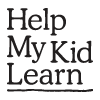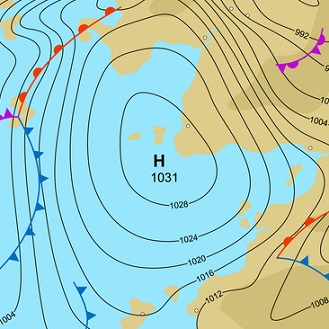What to do with this activity?
Show your child weather maps on television, online or in the daily newspapers and learn how to read them. It will tell you what sort of weather to expect tomorrow!
Notice the lines, called isobars, that join areas of equal air pressure. If the lines are very close together there will be strong winds. On most weather maps there are areas of low air pressure (marked with a big L) and areas of high air pressure (marked with a big H). Low pressure usually means cloudy skies and unsettled weather. High pressure means clear skies and still air, with sharp frosts in winter or warm sunshine in summer. Did you know that, north of the equator, the air around low pressure areas moves counter-clockwise, whereas the air around high pressure areas moves in a clock-wise direction.
As well as isobars, a weather map will likely have some thicker lines with either spiky triangles along the length, or half circles. These indicate where a mass of cold air meets warmer air (a cold front - a line with triangles) or where a mass of warm air meets colder air (a warm front - a line with half circles).
For more information have a look at Met Eireann's PDF top right of this page. For an American made video that explains weather maps clearly, click here.
-
Why am I doing this?
Children gain confidence in speaking through demonstrating their knowledge to others. Chatting and listening to your child will help build their communication skills. Talking about words and their meaning in everyday life will also help build your child’s vocabulary – and your own!
-
How can I do more?
Funny stories are interesting and a good excuse to get your child talking. At mealtimes, each family member could tell something interesting or something funny that happened during the day. Watching TV together can also provide a good opportunity for chat and to discuss what you are watching. Check if your child understands different things they hear and encourage your child to teach you new words and things they have learnt.
Rate this activity
![]()
![]()
![]()
![]()
![]()
Based on 28 reviews
How would you rate it?
1 = Poor, 5 = Great.



